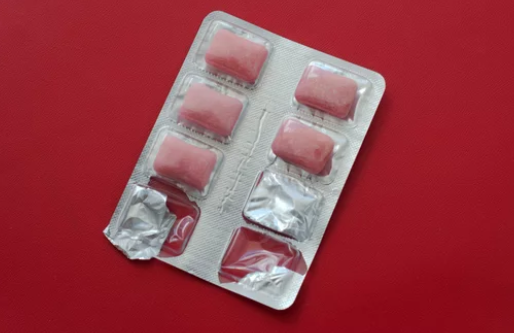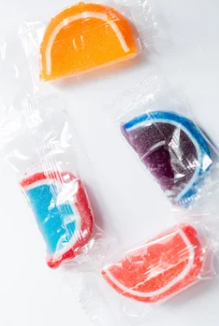Gummies are popular for their sweet flavor and chewy texture, but they can easily lose their quality if not stored properly. Proper storage helps keep gummies fresh, soft, and flavorful for a longer time. Whether they are vitamin gummies or candy gummies, factors like humidity can greatly affect their condition.
When gummies are stored the wrong way, they can quickly change in texture and taste. Exposure to heat can cause them to melt and stick together. If there is too much moisture, mold may grow. Then they are unsafe to eat. So gummies require a suitable placement condition.
What are ideal gummy storage conditions?
Gummies need a cool and stable temperature. The ideal one is usually between 18°C and 22°C. This temperature helps the gummies keep their good shape and texture. Most people keep gummies in a pantry or cupboard that is away from kitchen heat sources, like ovens. It lasts the gummy shelf life.
Heat and sunlight can quickly damage gummies. When exposed to high temperatures, they start to melt and stick together. It will form one large clump instead of separate pieces. Direct sunlight can also fade their color and affect their flavor over time. To keep gummies fresh, gummies should be placed in a shaded area. In this way, the temperature stays consistent throughout the day.
Humidity is another important factor that affects gummy quality. When the air is too humid, moisture gets into the gummies. Then they will become sticky and soft. This condition can also create the environment for mold to grow. On the other hand, if the air is too dry, the gummies may lose water and become hard or brittle. So you need to keep them in a dry and airtight container. It helps protect them from changes in humidity and preserves their original texture and taste.
Four best containers for storing gummies
The choice of container plays an important role in keeping gummies fresh. Airtight containers provide better protection. A sealed container blocks outside air and moisture, which helps maintain the gummies’ soft texture.
Resealable stand-up pouches

Resealable stand-up pouches are one of the most common packaging types for gummies. They are always with a zipper lock for gummy preservation. The zipper design allows repeated opening and closing while keeping air and moisture out. The stand-up style helps the package stay upright on shelves. This is practical for both home storage and retail display. Many gummy companies also use this packaging because it is lightweight and easy to carry.
But these pouches may not seal tightly enough over time. As a result, air can slowly enter and cause the gummies to dry out or become sticky.
Jars

Glass jars offer several benefits for long-term storage. Their non-reactive surface prevents odor transfer, so the gummies keep their original flavor. Glass also provides better insulation against temperature changes compared to normal plastic bags. Transparent jars make it easy to check the gummies’ condition without opening the lid. This helps reduce unnecessary air exposure.
Blister Packs

A blister pack separates each gummy into a small pocket. It is sealed with a plastic cover. This type of packaging prevents the gummies from sticking together and keeps each piece protected from air and humidity. Blister packs are often used for vitamin gummies or supplements. Because they allow easy control of daily portions and maintain product hygiene.
Individually wrapped gummies

Each gummy is sealed in a small wrapper and stays separated from the others. This method prevents sticking and keeps each piece clean and safe. Individual wrapping also makes gummies easy to carry and share, or sell in small portions. But the cost is higher than other packaging.
In addition, proper sealing helps prevent air and moisture for good protection. Before you close the container, the bag inside should stay completely dry to avoid condensation. Dessicants like silica gel packets can be placed inside to absorb humidity. A tightly closed lid after each use also ensures a stable environment. This could keep the gummies fresh and chewy for longer periods.
How do you know gummies go bad?
When gummies become unsafe to eat, there are some evident signs for you to notice.
Color, smell, or texture changes
Fresh gummies usually have bright colors, sweet smell, and chewy texture. When they start to go bad, the appearance and smell often change first. Faded or unusual colors may mean the ingredients have broken because of light or air exposure.
A sour or strange odor can indicate bacterial or mold growth. The texture can also show clear signs. Gummies that were once soft may become dry and hard, while others may feel sticky or oily on the surface. These changes suggest that the gummies are no longer in good condition.
Mold or moisture signs
Visible mold growth is one of the most obvious warnings that gummies have spoiled. Small white, green, or fuzzy spots on the surface mean the product is unsafe. Moisture buildup inside the container can also lead to bacterial growth even if mold is not yet visible. If the gummies look unusually wet or slippery, it always means they have absorbed too much moisture and should not be eaten. A damp smell inside the container is another sign that the storage conditions were too humid.
How to keep gummies from sticking together?
Coating
Coating is one of the most effective ways for prevention during packaging and storage. Gummy manufacturers always use a thin layer of cornstarch or sugar powder for coating. It forms a dry surface barrier that reduces contact between gummy pieces. Cornstarch works well for standard gummies because it absorbs surface moisture without changing the flavor.
Sugar coating offers a glossy look and adds sweetness. It is popularly used for candy-style gummies. Some factories also use oil or wax to improve shine and reduce friction during packaging. You can choose a suitable coating based on the product’s formula, moisture level, and color.
Proper drying and cooling
The drying and cooling process is another key factor that affects stickiness. If gummies enter the cooling process too early, they are more likely to clump together. Manufacturers usually dry gummies in a controlled environment until the surface becomes firm and non-tacky. The cooling stage needs to avoid condensation, which can cause surface moisture to return. When drying and cooling are done correctly, the gummies have a stable texture and longer shelf life.
Avoiding high humidity
Humidity control during production and storage is important. High humidity causes the surface to become sticky and makes microbial growth. For most gummy production lines, the ideal relative humidity stays between 35% and 45%. Air conditioners and dehumidifiers are often used to maintain this level. Moreover, proper ventilation is also needed to keep the temperature and humidity stable. It helps packaging lines stay as dry as possible.
How to soften gummy bears?
Gummies can become hard when exposed to air for too long. Softening helps get their original chewy texture and makes them easier to eat. It also allows people to soften gummies and use them for more creative food.
Microwave heating is mostly used. In this way, A microwave-safe bowl should be needed. The heating time should be kept very short, usually 5 to 10 seconds. It can avoid melting. This quick method is simple and effective to make gummies become too firm after storage.
The end
Proper storage plays a key role in keeping gummies fresh, safe, and enjoyable to eat. For manufacturers, good storage and packaging also protect the product’s appearance and shelf stability. Careful control of drying, cooling, and humidity ensures that gummies reach consumers in their best condition.